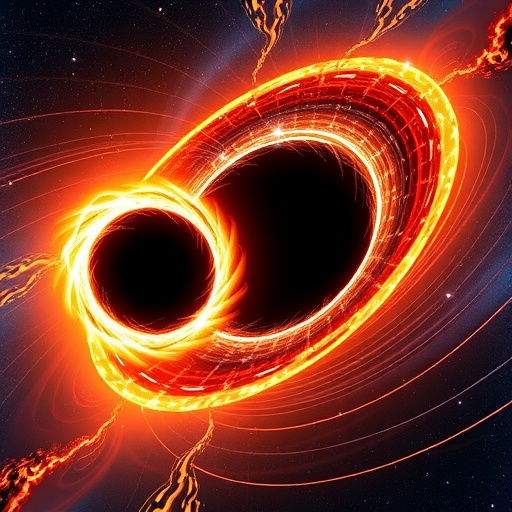In the ever-expanding frontier of astrophysics, black holes remain among the most enigmatic and captivating phenomena in the cosmos. These celestial objects, defined by regions where gravity is so intense that even light is trapped, continue to challenge and inspire scientists worldwide. Recent breakthroughs by researchers at Goethe University Frankfurt, led by Professor Luciano Rezzolla in collaboration with the Tsung-Dao Lee Institute in Shanghai, promise a revolutionary leap forward in our ability to test and differentiate between competing theories of gravity by scrutinizing the shadows cast by black holes.
Black holes, notoriously elusive, have evaded direct observation due to their nature of consuming all incoming matter and light beyond their event horizons. The groundbreaking Event Horizon Telescope (EHT) collaboration transformed this picture by capturing the first-ever images of the supermassive black holes at the centers of galaxies M87 and our Milky Way. These images do not depict the black holes themselves but reveal the glowing, hot plasma swirling in the immediate vicinity just outside the event horizon. This plasma emits electromagnetic radiation, primarily in the radio frequency band, which the EHT collects across its network of radio telescopes globally, synthesizing an Earth-sized virtual image-capturing apparatus.
Professor Rezzolla emphasizes that these shadow images offer more than stunning visuals; they embody a new testing ground for our understanding of gravitation. Einstein’s general theory of relativity, the bedrock of contemporary gravity theory, predicts the existence of black holes with defining characteristics, including the event horizon—a boundary beyond which information cannot escape. Despite its unparalleled success in describing gravitational phenomena, physicists acknowledge the potential for alternative gravity theories that propose different structures or behaviors for black holes, some even involving exotic matter or deviations from known physical laws.
In their recent publication in Nature Astronomy, Rezzolla and his colleagues introduce a comprehensive framework to assess and discriminate between these competing theoretical models through precise measurements of black hole shadows. The crux of their approach lies in combining advanced three-dimensional simulations of magnetized plasma dynamics within curved spacetime with systematic characterizations of the geometrical features and sizes of resultant shadow images. These simulations replicate the complex interplay of matter and magnetic fields, enabling synthetic observations to anticipate subtle distinctions in the appearance of black holes under various gravity theories.
Akhil Uniyal, lead author from the Tsung-Dao Lee Institute, highlights that one of the most challenging aspects has been quantifying just how different black hole shadows become when calculated within distinct theoretical paradigms. Their simulations reveal that while differences exist, they are remarkably subtle and currently masked by the limited resolution capabilities of telescopes like the EHT. Nonetheless, the study explains that with future enhancements in observational technology—particularly improvements that push angular resolution below one millionth of an arcsecond—the subtleties will become discernible, allowing empirical discrimination between Einsteinian black holes and hypothetical alternatives.
The EHT currently achieves an angular resolution equivalent to imaging a grapefruit on the Moon from Earth, yet theoretical predictions suggest that to rigorously test alternative gravity theories, resolutions must improve further. Such observational precision would enable the measurement of shadow radii with unprecedented accuracy, crucial for verifying the unique deviations predicted by competing models. This anticipated leap in resolution might be realized by expanding the EHT array with additional ground-based telescopes and deploying radio telescopes in space, creating a more sensitive and extensive interferometric network.
One of the significant scientific gains of this research is turning previously theoretical constructs into empirically testable phenomena. Black holes, once purely mathematical solutions, now serve as real astrophysical laboratories where fundamental physics can be experimentally vetted at extreme scales. Although current measurements are consistent with Einstein’s theory, they have only begun to eliminate the most exotic and less probable hypotheses, such as naked singularities—black holes without event horizons—or more speculative entities like wormholes. This research underscores the necessity of continuous scrutiny and testing of even the most established physical theories, especially in regimes of strong gravity where novel physics could emerge.
From a technical standpoint, the simulations conducted by Rezzolla’s team incorporate the full complexity of general relativistic magnetohydrodynamics (GRMHD). They numerically solve equations describing plasma behavior influenced by intense gravitational fields, including factors like relativistic Doppler boosting and gravitational lensing, which are pivotal in shaping the observed brightness and morphology of black hole shadows. By applying this methodology across different gravitational




